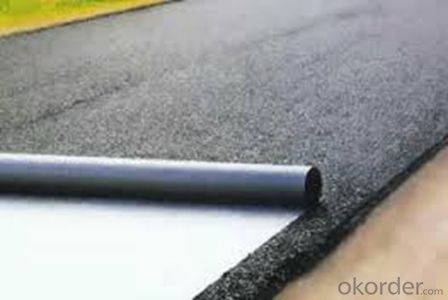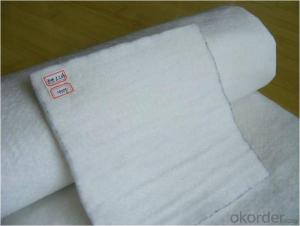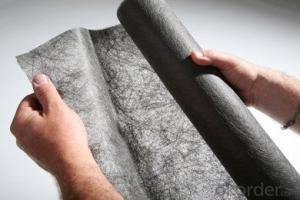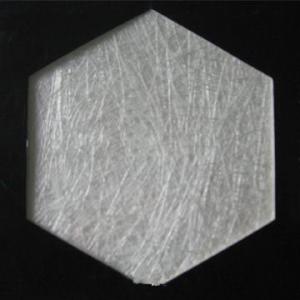Non-Permeable Geotextile Membrane - Pet Filament Fiber Non-Woven Geotextile for Railway
- Loading Port:
- China main port
- Payment Terms:
- TT OR LC
- Min Order Qty:
- 5000 m²
- Supply Capability:
- 1000000 m²/month
OKorder Service Pledge
OKorder Financial Service
You Might Also Like
Specification
PP/PET non woven geotextile,used as earthework material and engineering fabric.width 1-6m,thickness:0.9-6.5mm.weight:100-1200gsm
Our geotextile can be made of polypropylene (PP) or polyester(PET),The weight is available from 100g/m2 to 1200g/m2 and the width from 1m to 6m,Two kinds of processing technical to select: needle punched and thermally bonded.long fiber or short fiber.All kinds of colors are available.Our annual production ability is 20 million square meters.
It is widely known as earthwork material and industry fabric,used in the areas of railway,highway,water conservancy,dam,tunnel,subway,environment protection and so on.
We can supply different specifications as customers`s request.

Detailed Images
Packaging & Shipping
Packing: PLASTIC FILM INSIDE, AND WOVEN BAG OUTSIDE
Shipping: About 15 days after receipt the deposit
geotextile fabric
permeability,filtration,easy for construction
ISO and CE certificate
Good quality and competitive price
Our Service
Quality assurance
1.On a regular basis or as per your request,we entrust national testing agencies to conduct quality inspections
2. Strictly in accordance with the ISO9001-2008 international quality system standard,we monitor and manage the whole process throughout production,quality testing,and measurement to ensure product quality
3. For quality-related construction delay or substandard construction(except for damage or losses due to customer’s responsibility or irresistible natural disasters),we have refunding,replacement,and repair services.We will respond to customers’ feedbacks on quality issues within 24 hours.
After-sales service
1.In order to provide customers with comprehensive technical support,we will provide technical and other related information upon request in a timely manner.
2.In required,we will appoint specialized technicians to the construction site to give technical trainings to construction people,and offer technical guidance throughout the whole construction process.
3.For damage due to shipment and delivery,after we receive the complaint,we will check the issure through provided pictures and videos.If our responsibility is confirmed,we wil offer free replacement.
4.When the construction is completed,as your request,our technical staff may participate in the final acceptance.
FAQ:
Q: What kind of payments does jenor support?
A: T/T, L/C, Cash are accepted.
Q: Do you charge for the samples?
A: Accordeing to our company policy, the samples are free, we only charge the freight fee. And we will return the freight fee during the next order.
Q: Can you produce according to customers' design?
A: Sure, we are professional manufacturer, OEM and ODM are both welcome.
Q: Do you have other products?
A: Yes, please check the pictures:
- Q: How do geotextiles affect soil erosion rates?
- Geotextiles can significantly reduce soil erosion rates. They act as a protective barrier that stabilizes the soil and prevents it from being washed away by water or blown away by wind. The geotextile fabric allows water to pass through while trapping sediment, thus promoting filtration and preventing erosion. Additionally, geotextiles can enhance vegetation growth by providing a favorable environment for plant establishment, further reducing soil erosion rates.
- Q: How do geotextiles help in soil reinforcement?
- Geotextiles help in soil reinforcement by providing a strong and stable base for the soil. They act as a barrier between the soil and other materials, preventing erosion and maintaining the integrity of the soil structure. Additionally, geotextiles distribute the load evenly across the soil, reducing the risk of settlement and increasing the overall stability of the area.
- Q: Long-term exposure to geotextiles on the human body what harm?
- No big problem
- Q: Whether the non-woven geotextile is required for inspection
- What is your project ah first look at your weight is enough that this is the initial judgment
- Q: Can geotextiles be used in green infrastructure projects?
- Yes, geotextiles can be used in green infrastructure projects. They are commonly used to reinforce soil, control erosion, and promote the growth of vegetation in various green infrastructure applications such as rain gardens, bioswales, and green roofs.
- Q: Can geotextiles be used for erosion control in golf courses?
- Yes, geotextiles can be used for erosion control in golf courses. Geotextiles are permeable fabrics that can be installed to stabilize soil and prevent erosion by providing a barrier against water flow. They are commonly used in various landscaping applications, including golf course construction and maintenance, to control erosion and improve soil stability.
- Q: How to apply the geotextile of the retaining wall filter
- I am specializing in the production of geotechnical materials, wish smooth
- Q: 800g / m2 non-woven geotextile vertical permeability coefficient is generally how much
- 800g / m2 non-woven geotextile vertical permeability coefficient is: 6.1 × 10-2
- Q: Geotextile (two cloth a film) to detect the frequency requirements? On behalf of the number?
- Geotextile and geomembrane detection frequency is 100 volumes detection time.
- Q: How are geotextiles affected by mechanical stress?
- Geotextiles are affected by mechanical stress in several ways. Firstly, when subjected to heavy loads or forces, they can experience deformation or stretching, potentially leading to loss of their intended functions. Additionally, mechanical stress can cause geotextiles to fray or tear, compromising their durability and structural integrity. Therefore, it is crucial to select and design geotextiles that can withstand the anticipated mechanical stresses in their intended applications.
Send your message to us
Non-Permeable Geotextile Membrane - Pet Filament Fiber Non-Woven Geotextile for Railway
- Loading Port:
- China main port
- Payment Terms:
- TT OR LC
- Min Order Qty:
- 5000 m²
- Supply Capability:
- 1000000 m²/month
OKorder Service Pledge
OKorder Financial Service
Similar products
Hot products
Hot Searches
Related keywords
































